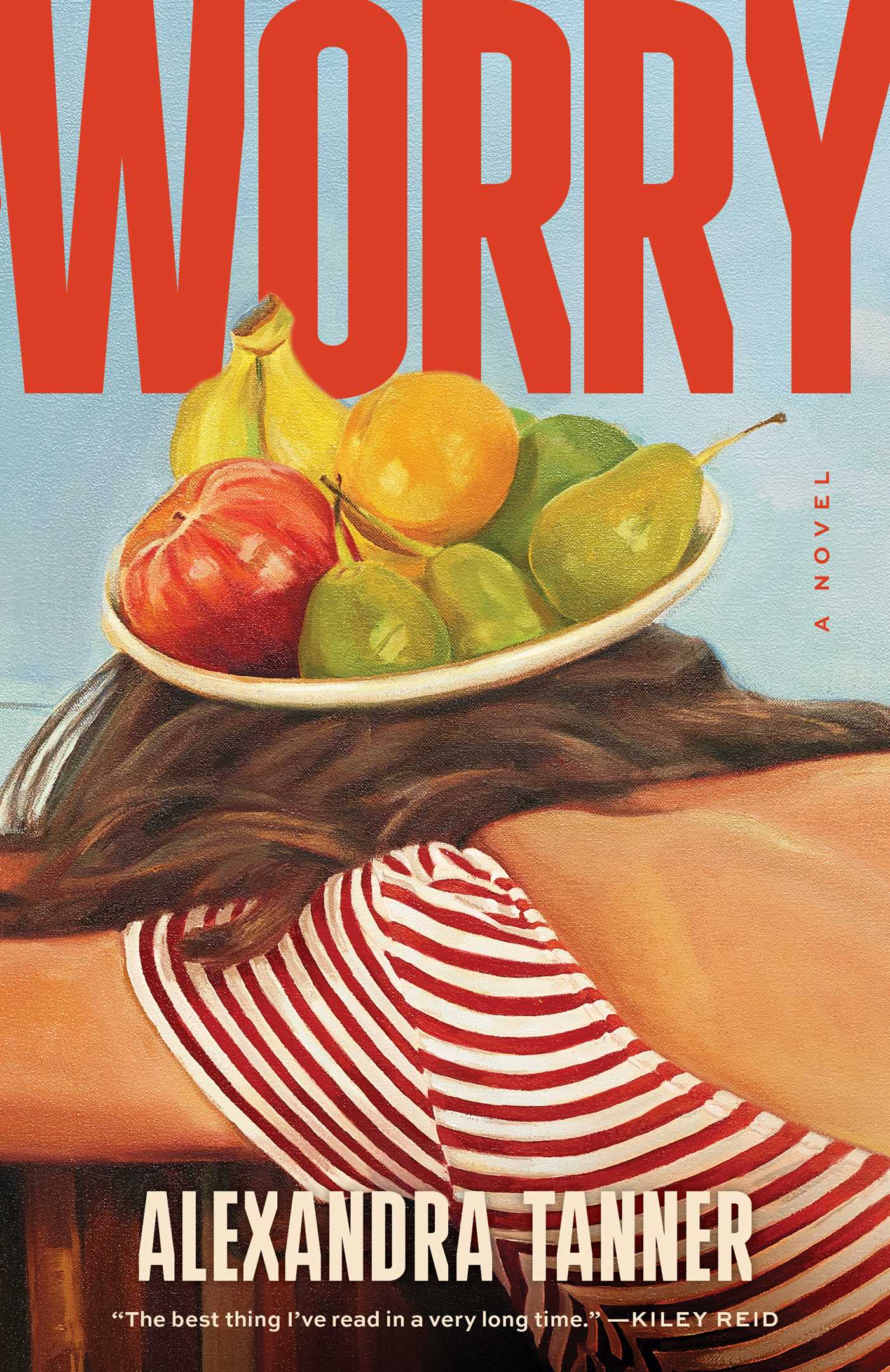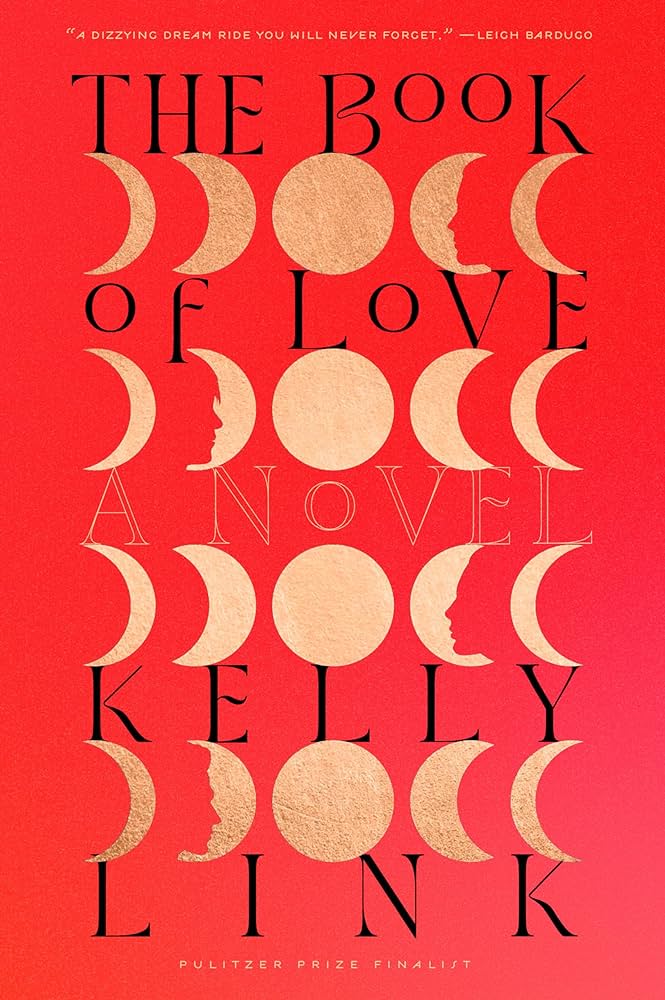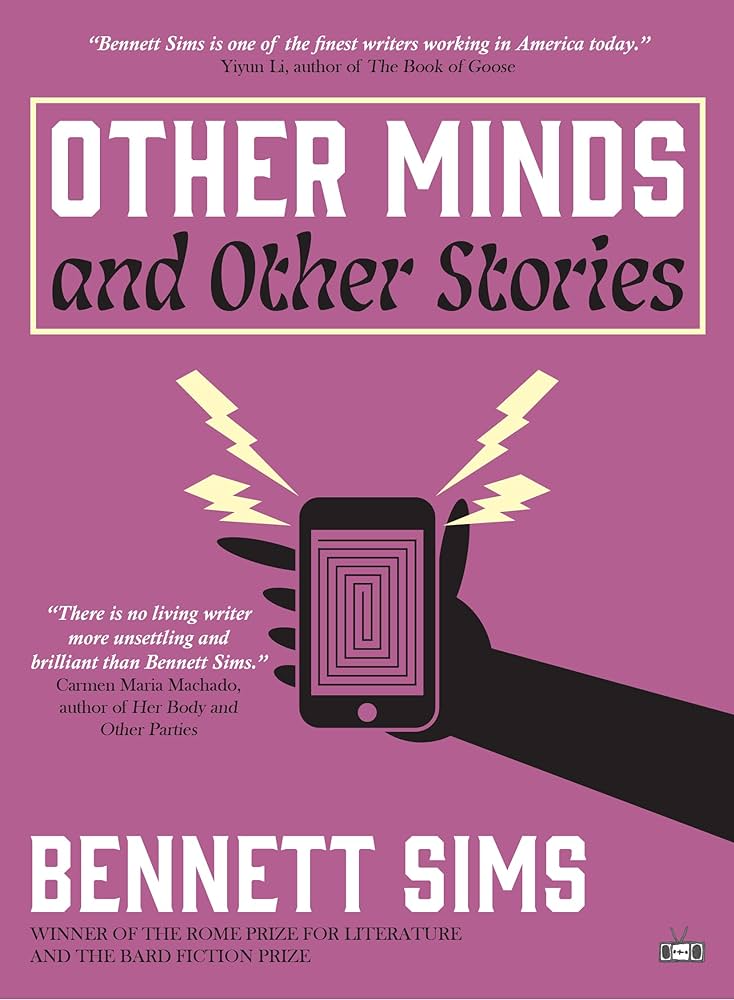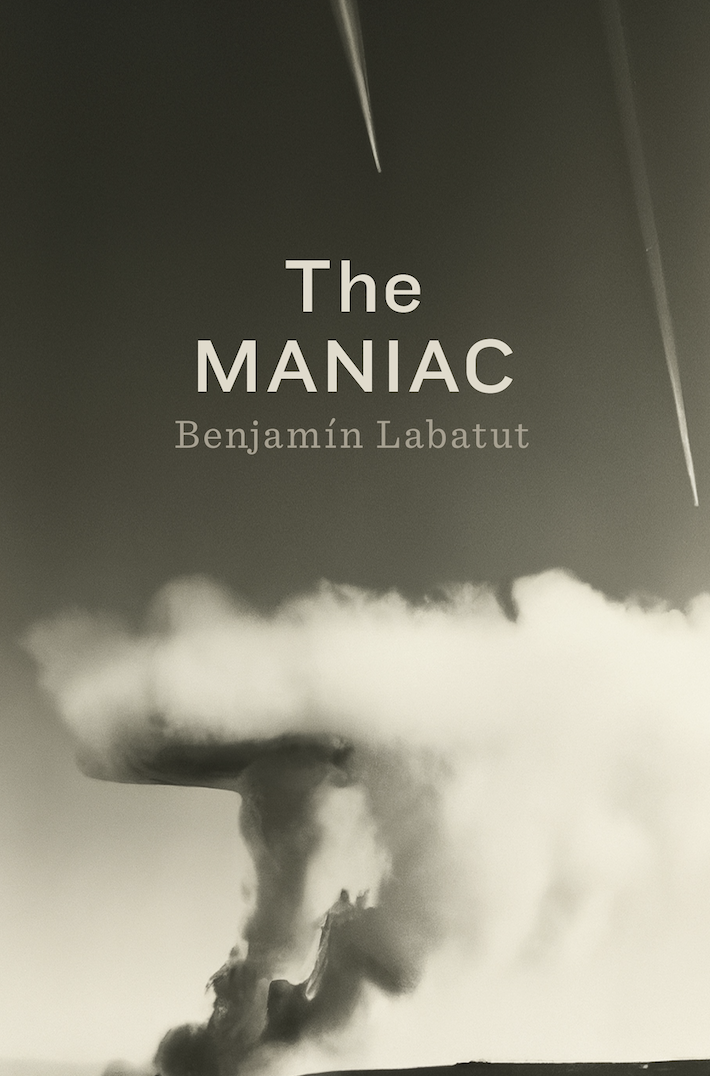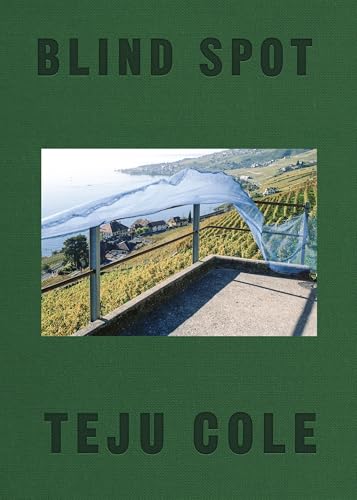
“Like speech, which leaves no mark in the air,” Teju Cole writes in the calmly incantatory and unsettlingly alert Blind Spot, “our bodies leave no mark in space.” On the facing page is a photograph of two Berliners, two strangers, caught in a moment of uncanny resemblance. Blind Spot is comprised of text-image pairings, each of which takes a place-name as its title. Both men are turned away from us, being busy with the work of looking: one studies a sign from his wheelchair while, a ways off, the other leans against a tree. With no faces to know them by, their nearly matching hats take on a disproportionate resonance. (It’s worth noting at the outset that to try to capture the effect of Cole’s photographs, as a reviewer prevented from reproducing the images, is to reckon with a visual eloquence—spare in its means and tending toward a subdued surreal—that often eludes description. It also serves as a reminder that Cole’s facing text never does this work for us, never makes straightforward description its function.) Here the accompanying prose places his looking in time:
A moment later, the man by the trees has moved on. He has not noticed his echo behind him, and the man who echoes him has not noticed him or, even if he has, has certainly not noticed himself noticing him. There are thousands of such echoes and agreements every minute. Almost all go unseen, and almost none are recorded, unless photography intervenes.
In Blind Spot, Cole creates a space in which to notice himself noticing—he’s the third echo in the series, and invites us to stand in as the next—and the result is something richer and more ambiguous than we might have anticipated. Instead of being explained away, the resonance of the more than 150 photographs Cole has taken and collected here is deepened for being met with such sustained and lyrical textual scrutiny, with the free forays of his capacious mind—one that’s often unconsoled but never merely disenchanted.
 Cole, a novelist and essayist—and, as we see here, photographer—who writes a column on photography for The New York Times Magazine, garnered a great deal of admiration for Open City, a novel that takes after W.G. Sebald in the way it makes its protagonist not, finally, a young psychiatrist named Julius but instead the solitary consciousness he’s possessed by, subject to the laws of dream and memory, capable of being swept up on “aimless walks” by all sorts of unsuspected associations, echoes, agreements. In this way, Julius’s inwardness both enforces his separation from the world and ties him to it. More than a few passages in Open City would be perfectly at home if set beside an image in Blind Spot. The reverse is true too: It might have been Julius who said to us, as Cole does in a memorable and almost definitive aside, “I’ve been walking for hours. I’m lost as usual in the precincts that others call home.”
Cole, a novelist and essayist—and, as we see here, photographer—who writes a column on photography for The New York Times Magazine, garnered a great deal of admiration for Open City, a novel that takes after W.G. Sebald in the way it makes its protagonist not, finally, a young psychiatrist named Julius but instead the solitary consciousness he’s possessed by, subject to the laws of dream and memory, capable of being swept up on “aimless walks” by all sorts of unsuspected associations, echoes, agreements. In this way, Julius’s inwardness both enforces his separation from the world and ties him to it. More than a few passages in Open City would be perfectly at home if set beside an image in Blind Spot. The reverse is true too: It might have been Julius who said to us, as Cole does in a memorable and almost definitive aside, “I’ve been walking for hours. I’m lost as usual in the precincts that others call home.”
Here, for instance, is Julius thinking back on his father’s burial—or, more precisely, taking up the way time has transformed its meaning, melding the original memory with other and later impressions, freighting this most personal of associations with a significance that moves from the fixity of pain to something at once more encompassing and more emotionally uncertain:
I was on the 1 train on the way to work when it came to mind that he had been committed to earth for exactly eighteen years. In that time, I had complicated the memory of the day, not with other burials, of which I had attended only a few, but with depictions of burials—El Greco’s Burial of the Count of Orgaz, Courbet’s Burial at Ornans—so that the actual event had taken on the characteristics of those images, and in doing so had become faint and unreliable…Sometimes, in waking dreams, I imagined my father with coins on his eyes, and a solemn boatman collecting them from him, and granting him passage.
Those “coins on his eyes” hark back to an earlier passage in which Julius broods on a shipwreck of slaves, some of whose bodies were recovered with relics traditional to their countries of origin. He has come to know his father, in the long remembering, as someone marked intimately by the sweep of history—and, so too, as a presence impossible to disentangle from artworks that might seem alien to that history. So they multiply, the complicating pressures on memory. And if much of the pathos of this passage arises from a muted sense of misgiving at the way memory and imagination spiral out from—and threaten to attenuate—the personal, part of the originality and force of Cole’s vision lies in its ultimate commitment to this same movement, its sense of the self as tending, in a rich indeterminacy, beyond the hard and fast dictates of biography.
The view is linked, in Cole’s writing, to an abiding emphasis on the visual plane: we take the work of looking seriously when we realize how deeply formed we are by what we see; or, put a bit differently, how deeply our ways of seeing shape us. Cole was once a child preacher; now his faith, such as it is, rests in the ambiguous resonance of images which, in all their “radical equality,” call us unwaveringly to the making of meanings:
São Paulo
Years later, I lost faith. One form of binocular vision gave way to another. The world was now a series of interleaved apparitions. The thing was an image that could also bear an image. If one of the advantages of irreligion was an acceptance of others, that benefit was strangely echoed in the visual plane, which granted the things seen within the photographic rectangle a radical equality. This in part was why signs, pictures, ads, and murals came to mean so much: they were neither more nor less than the “real” elements by which they were framed. They were not to be excluded, nor were the spaces between things. “We see the world”: this simple statement becomes (Merleau-Ponty has also noted this) a tangled tree of meanings. Which world? See how? We who? Once absolute faith is no longer possible, perception moves forward on a case by case basis. The very contingency and brevity of vision become the long-sought miracle.
Cole works movingly in places to convey this brevity, and there are moments where the goal of the accompanying prose, it seems, is not to further cement the permanence of an image but instead to restore to us a fuller sense of the subject’s precarious—so that much more miraculous—being in time. Here is Cole in an unabashedly faithful moment: there is only connection, sudden happiness of the man who looks up and finds, all unsuspecting, an echoing presence:
Old Goa
I swear he just suddenly appeared. The angel is the one who communicates between realms. Hermes, medium, channel between things, gatherer of potentials, the flow station of being. Is this Indra, who was as precocious as Hermes was, borne on the winds as Hermes was? Or is it Ganesh, messenger of the gods, opener of roads, first port of worshippers’ call? Out in the sun that day, some kind of Catholic procession was going on, raucous around the old cathedral, but inside the café of the Datta Prasad Hotel, a hermetic air reigned. I raised my camera slowly. His glance took hold of me.
The glance we see, tellingly, is not the kind we’d immediately expect to take hold of somebody. It is shadowed in more than one sense. There’s a surprising guardedness to the man’s expression, for all the ease of his pose, a decided and still-deciding inwardness. Cole’s echo, in other words, doesn’t simply sound the note of uncomplicated presence: he’s not entirely “in the moment,” to take up the truism, nor of it. He’s both there and elsewhere—a reminder that when we look out on the world we do so not just with the eye but with the whole mind. If this imposes a certain distance between us and what we see, it also heightens the possibility of human connection, since the mind’s entry allows for the act of association, that essential human art of drawing connections between things, of more deeply seeing what’s before you by following it out to what isn’t. Here is Cole in two places at once, in a single moment of vision:
Bombay
“In a dark time, the eye begins to see.” Quite by chance, while I was taking a photograph of the one-eyed car in Zürich—late afternoon, and the sun was going from the streets—I heard a friend’s voice behind me. “Was machst du denn da?” She laughed. I turned around and saw in her eyes a gale force grief, for her mother had only just died the previous week.
Cole has found himself in a row of stalled Bombay cabs, and a passenger in the next car but one has turned to look at him with an intensity that is as hard to ignore as it is to account for. There’s something staggering about the way text and image come together here to hit on a truth slantly, accumulating force by a shared indirection, looking head-on by looking away. We have to picture that “gale force grief,” and we see it more terribly for Cole’s not placing it before us. Part of what this pairing does so successfully is to meet us with a double sense of dislocation: that of Cole seeing past his friend’s casual laughter in Switzerland to something not spoken; and now, in putting the book together—its associations mimicking the work of memory—bearing us on to this man returning his glance in Bombay. The man is very conspicuously at a remove—the frames of four taxi windows come between him and Cole—and yet this framing has the effect of intensifying the instant’s exchange. Such is the sense of heightened concentration, of a zeroing-in, that it’s easy to miss a passenger bent over in the middle cab. To spot him is to inhabit even more fully a space of belated recognition, to live out Cole’s moment—on that street in Switzerland, taking a photograph other than the one we see—of awful clarity.
It’s a clarity that leaves Cole wary of a certain easy sort of beauty, even as he lets us feel its lure. Sometimes his text works to subvert the silent impress of an image. By way of the minute detail or great vista, history is always entering in. Next to a commanding mountainside scene, he sets this:
Vals
Windless day. Optical bliss. Many years later, and only in the current century, the government agreed to a fund out of which they would be paid, these now grown children who had been taken from their families, tens of thousands of them, and placed as slave labor in farms all around the country, the Verdingkinder as they are known, the contract children, back when Switzerland was not as rich as it now is. The fund was about half a billion francs. What it could not salve was the memories for these children of unmarried mothers, these gypsy children, these poor children: the angry shouts, the cold nights that cut like a blade, the hatred we naturally bear toward the weak and helpless, the terror of the long days in those mountains with their rough stones and vertiginousness and mocking beauty.
There’s a tragic strain in Cole’s vision, and you feel its full measure in the shock of that last pronoun—“the hatred we naturally bear toward the weak and helpless”—which acknowledges this thing of darkness as our own. And still the lyric accumulations of the last sentence (“the angry shouts, the cold nights”) work toward a different kind of identification, one with the children in question. It is borne of a bracing compassion. Elsewhere Cole offers a memorable definition of man as “the animal that can mourn strangers.” It’s a capacity on display in a lovely elegy-in-miniature, one that shows the suggestive power of Cole’s eye as well his deep trust in what he calls “the common”:
Rhinecliff
He was frail when I last saw him read. This was in 2010, some years after the stroke. I don’t remember if he had trouble walking then, but we thought of mobility because he read from “Miracle”:Not the one who takes up his bed and walks
But the ones who have known him all along
And carry him in—There was always bipedal grace in his poetry, the this helping the that, a forward motion. Years later his loss left me tottering.
What do we see? A couple pipes standing in for the great poet. I think Seamus Heaney, he of “A Stove Lid for W.H. Auden,” would have appreciated the gesture. To be surprised and moved by the association is to be reminded that what the imagination sees is truth too. Projection is not simply error. Who but Cole would look closely at a handful of metal fold-up chairs and, without moving his eye, come away with an urgent commentary on Black Lives Matter:
Brooklyn
Something in the middle of a group of five. Something on the periphery: something first, something last. Something squeezed. Something brown. Something made of metal but susceptible to injury. Something designed for some other purpose. Something on the street. Something held up by others in its group. Something under pressure. Something exerting pressure. Something seen on the way to a rally in the time of Black Lives Matter.
These are acute acts of perception, and it may be worth applying scrutiny to Cole’s way of defining his project negatively, what with its title: he’s interested, he says, in the limits of vision (in much the same way, he has remarked that Open City “is in part an examination of the limits of sensitivity and of knowledge”). It’s a preoccupation whose urgency can be grounded partly in biography: as Cole has movingly described in an essay that takes the same title, and as he touches on several times here, he has suffered from poor vision his whole life. Quite apart from this, he woke up one day with no sight in his left eye and little in the right, and was ultimately diagnosed with a condition his doctor translates as “big blind spot syndrome”—its cause unknown, transitory but subject to return. Following this unsettling experience, Cole says, “the looking changed.” And though in Blind Spot he stays true to the ambition at a higher scrutiny, striving in passage after passage to “look through the skin of the photograph” for what is left out, to remain in the presence of his patiently accruing acts of attention is to realize that this is finally a constructive project, one animated not only by an ethic of alertness but by a kind of saving enchantment. Here and there Cole takes a photograph of a photograph, and the result persuades you of just that “radical equality” he remarks on. He finds a way of apprehending an artwork, of transparently situating it in place and time, that manages to leave intact its essential mystery:
Copenhagen
“They came to the other side of the sea, to the country of the Gerasenes. And when he had stepped out of the boat, immediately a man out of the tombs with an unclean spirit met him….Then Jesus asked him, ‘What is your name?’ He replied, ‘My name is Legion; for we are many.’”At the Ny Carlsberg Glyptothek in Copenhagen is a photograph of a Catholic procession in rural Southern Italy. Next to it is a high marble relief of a Roman ritual procession from around the time of the Ara Pacis. It depicts a number of women in profile. Between the relief sculpture and the photograph is the museum’s russet wall, split so that which section is in front and which is behind is hard to read. The relief sculpture looks in fact like a photograph of a sculpture, and is difficult to resolve into its three-dimensional form. The women from 1 b.c.e. are on the verge of crossing the red sea and joining their distant Italian daughters and sons.
The facing photograph gives lovely life to this impression. Participants in the less ancient procession, captured in a photograph within the photograph, fix their eyes on us; the women of the Roman sculpture, set in profile, watch them in turn. An intervening sliver of wall does little to diminish the sense of a real looking, an achieved crossing—such is the charged space Cole has patiently created for us, image by image and passage by passage.
Blind Spot is a book composed of such crossings, or the hope of such crossings. Cole says what he values is not the shock of the new but “the shock of familiarity, the impossibility of exact repetition.” Following his mind’s maneuverings, you grow newly sensitive to the superabundance of ordinary transformations that life presents us with. One image enriches, both leans toward and tenses against, another; quietly, somehow, things cohere. In one memorable sequence, a spectator approaches a sculpture in a Chicago museum in more than one sense, the man bowing his head to read a placard and, in so doing, assuming the pose of the sculpted child; both are then lent a probingly unlikely evocation on the following page, in the form of a man in a gray hoodie using a New York payphone; all these are then recalled by an angled lampshade in distant Tivoli.
Such correspondences often strike us over the space of many pages. In its very structure, Blind Spot argues intimately for the capacity of each thing to illuminate, and find itself, in another. And still there are limits Cole remains alert to: grounding experiences that cannot be shared, gulfs he knows knowledge cannot cross. In the end, his close looking and thinking open out on the basic enigma of being. The following passage might have been lived or imagined: it is an existential mystery in miniature, prosaic in its details but imbued with a sense of the uncanny. We are left with a question whose only (and resonant) answer is its own inexact repetition. At the same time, we come away with one photograph, and another (or how many more) that could not quite be taken:
Qadisha Valley
I had parked my car in the shadow of the overhanging rock above the precipice. A man walked past my car, went past the traffic mirror and red safety notice, and stood at the edge. He appeared to be a foreigner. He stood there for a very long time, maybe fifteen minutes. He had a camera but didn’t take any photos. I wondered what kind of life he lived, what his past contained, and how he came to be standing here in this faraway country, at the edge of the precipice. What was he thinking about, there ahead of me?After taking the photo, I walked past a car parked in the shadow of the overhanging rock above the precipice. I went past the traffic mirror and red safety notice and stood at the edge of the precipice. There was a man in the car behind me, a local, to judge from the plates. He just sat there, not moving, and with no change in his expression. When I turned around and walked past him, probably a quarter of an hour later, his expression was still the same. I imagined that he came here to the edge of the precipice to get away from a difficult life, to enter into aloneness, silence, the cool of the rock’s shadow. What was he thinking about, there behind me?
